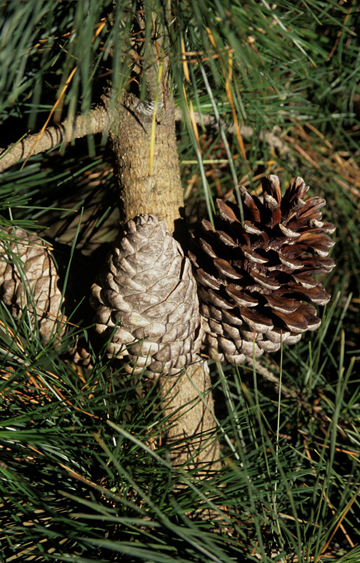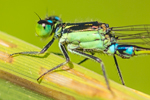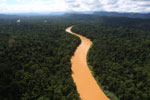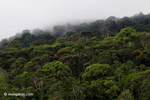In another sign of the global biodiversity crisis, the IUCN Red List has added 715 species to its threatened categories of Vulnerable, Endangered, and Critically Endangered in this year’s update. Some of these species were evaluated by the IUCN Red List for the first time while others saw their conditions deteriorate, such as the the white-lipped peccary (Tayassu pecari) which is now listed as Vulnerable due to overhunting, deforestation, and possibly disease. As of this year, the Red List has evaluated 70,923 of the world’s species—including almost all mammals, birds, and amphibians—of which 20,934 are deemed threatened.
“The overall picture is alarming. We must use this knowledge to its fullest—making our conservation efforts well targeted and efficient—if we are serious about stopping the extinction crisis that continues to threaten all life on Earth,” says Jane Smart, Global Director of the IUCN Biodiversity Conservation Group.
This year’s list includes an update of the world’s conifers, the first total re-evaluation of this plant family since 1998. According to the update, 34 percent of the world’s conifers are now threatened with extinction, up from 30 percent. For example, both California’s Monterey pine (Pinus radiata) and the Atlas cedar (Cedrus atlantica) fell from Least Concern to Endangered; in all 33 conifer species saw their status fall. On the other hand, Lawson’s cypress (Chamaecyparis lawsoniana) moved from Endangered to Near Threatened due to active conservation efforts.
 The Monterey Pine (Pinus radiata) is now listed as Endangered. Photo by: Aljos Farjon. |
“Conservation works and the results for the Lawson’s cypress are reassuring,” noted Aljos Farjon, Chair of the IUCN SSC Conifer Specialist Group. “However, this is clearly not enough. More research into the status and distribution of many species is urgently needed. We suspect that there are many new species waiting to be described but it is likely that they will never be found due to the rate of deforestation and habitat conversion for oil palm plantations.”
Oil palm plantations have driven deforestation across vast sections of Malaysia and Indonesia. The industry is now eyeing expansion in the forests of Africa and South America.
This year’s update also included the first evaluation of the world’s freshwater shrimp and marine cone snails. Scientists found that 28 percent of the world’s freshwater shrimp species are imperiled, while 8 percent of the cone snails.
“The freshwater shrimp data further confirm what we know from analyses of other animal groups: freshwater species are among the most threatened with extinction due to the dams, channels, pollution, and introduced exotic species in those ecosystems,” says Mary Klein, president and CEO of NatureServe.
Another family group that depends heavily on freshwater—amphibians—is arguably the most endangered vertebrate class on Earth. Currently the IUCN Red List considers 41 percent of the world’s amphibians as threatened with extinction. Meanwhile, a quarter of the world’s mammals face extinction and 13 percent of the world’s birds, however too few of the world’s reptiles and fish have been evaluated to make an accurate estimate.
Although the IUCN Red List has evaluated over 70,000 species since it’s inception, that’s only a drop in the bucket of the world’s total described biodiversity: currently 1.7 million species have been described with around 20,000 new species named every year.In fact, some taxonomic groups remain almost completely unevaluated: only one mushroom has been evaluated to date out of an estimated 31,000 species. While some 4,000 insects have been evaluated, over a million have been described.
Three years ago prominent scientists, including E.O. Wilson, called for a new initiative to assess an additional 100,000 or so species in an effort to create what they dubbed “barometer of biodiversity.” They estimated it would cost around $60 million dollars, but to date the initiative has not moved forward.
Lack of funds has hampered efforts across the board. It’s estimated that between $7-10 billion is spent annually on biodiversity conservation worldwide, mostly going to managing protected areas.
“For comparison, annual spending on subsidies to agriculture in the US, European Union and Japan is about US $220 billion per year,” reads a 2010 article in the IUCN World Conservation.
Scientists have been warning for decades that human beings are likely pushing the world into a mass extinction event with untold consequences for all, a warning that has only grown louder in light of worsening climate change, ocean acidification, and a human population that last year hit 7 billion. While the conservation plights of charismatic, big species get most of the media limelight, it’s likely that hundreds of thousands of other species are at risk of vanishing, some of them perhaps not even described by science and most receiving no targeted attention from conservationists.

The white-lipped peccary (Tayassu pecari) is now listed as Vulnerable. Photo by: Geoff Gallice.

The giant river prawn (Macrobrachium rosenbergii) is listed as Least Concern. Photo by: Chris Lukhaup.

The Yangtze finless porpoise (Neophocaena asiaeorientalis asiaeorientalis) has fallen to Critically Endangered. Photo by: Xiaoqiang Wang.
Related articles
New maps highlight global conservation priorities

(06/25/2013) What region of the world has the most imperiled mammals? Where are the most bird species found? And where are new amphibians being discovered? Indonesia and Malaysia is the answer to the first question; the Amazon, the second; and the Andes, the third. A new study in the Proceedings of the National Academy of Sciences (PNAS) has used global data on 21,000 mammals, birds, and amphibians to create magnificent maps that highlight missing priorities for conservation.
Pesticides decimating dragonflies and other aquatic insects

(06/18/2013) While recent research (and media attention) has focused on the alleged negative impacts of pesticides on bees, the problem may be far broader according to a new study in the Proceedings of the US Academy of Sciences (PNAS). Looking at over 50 streams in Germany, France, and Australia, scientists in Europe and Australia found that pesticide contamination was capable of undercutting invertebrate biodiversity by nearly half.
Conserving the long-neglected freshwater fish of Borneo

(06/11/2013) Borneo is a vast tropical island known for orangutans, rhinos, elephants, sun bears, proboscis monkeys, hornbills, and ubiquitous leeches. Conservationists have championed all of these species (aside from the leeches) in one way or another, but like many tropical regions Borneo’s freshwater species have long been neglected, despite their rich biodiversity and importance to local people. But a new organization, the Kinabatangan River Spirit Initiative, is working to change that.
Saving Gorongosa: E.O. Wilson on protecting a biodiversity hotspot in Mozambique

(05/30/2013) If you fly over the Great African Rift Valley from its northernmost point in Ethiopia, over the great national parks of Kenya and Tanzania, and follow it south to the very end, you will arrive at Gorongosa National Park in central Mozambique. Plateaus on the eastern and western sides of the park flank the lush valley in the center. Dramatic limestone cliffs, unexplored caves, wetlands, vast grasslands, rivers, lakes, and a patchwork of savanna and forest contribute to the incredible diversity of this park. What makes this place truly unique, however, is Mount Gorongosa—a towering massif that overlooks the valley below.
Over 500 scientists warn we ‘are causing alarming levels of harm to our planet’
(05/27/2013) A new consensus statement by 520 scientists from around the world warns that global environmental harm is putting at risk the happiness and well-being of this and future generations.
Biosphere conservation: monumental action is critical to avert global environmental crisis

(05/20/2013) Human-caused changes to our biosphere—the global total of the world’s ecosystems—are now so great and alarmingly rapid that human lives and societies undoubtedly face epic challenges in the near future as our biosphere deteriorates, planetary boundaries are reached, and tipping points exceeded. We may survive, we may painfully adapt, but it is a fair bet that grave hardship, loss, and sacrifice lay ahead. The nature and extent of impacts among human populations hinges on how successfully we respond to the biosphere crisis with extraordinary leadership, balanced solutions applied at global scales, and unprecedented cooperation—or not.
Climate change to halve habitat for over 10,000 common species
(05/13/2013) Even as concentrations of carbon dioxide in the atmosphere hit 400 parts per million (ppm) for the first time in human history last week, a new study in Nature Climate Change warns that thousands of the world’s common species will suffer grave habitat loss under climate change.
Future generations to pay for our mistakes: biodiversity loss doesn’t appear for decades
(04/15/2013) The biodiversity of Europe today is largely linked to environmental conditions decades ago, according to a new large-scale study in the Proceedings of the National Academy of Sciences (PNAS). Looking at various social and economic conditions from the last hundred years, scientists found that today’s European species were closely aligned to environmental impacts on the continent from 1900 and 1950 instead of more recent times. The findings imply that scientists may be underestimating the total decline in global biodiversity, while future generations will inherit a natural world of our making.
How many animals do we need to keep extinction at bay?
(04/15/2013) How many animal individuals are needed to ensure a species isn’t doomed to extinction even with our best conservation efforts? While no one knows exactly, scientists have created complex models to attempt an answer. They call this important threshold the “minimum viable population” and have spilled plenty of ink trying to decipher estimates, many of which fall in the thousands. However, a new study in Conservation Biology shows that some long-lived animals may not need so many individuals to retain a stable population.
Still hope for tropical biodiversity in human modified landscapes
(04/09/2013) As primary forests become increasingly rare and expensive to protect, many ecologists are looking to better management of Human Modified Landscapes (HMLs) to shepherd and shield biodiversity in the tropics. Secondary forests, selectively logged forests and lands devoted to sustainable agriculture already play an important role in conservation efforts. However, the idea that HMLs will serve as a “Noah’s Ark” for biodiversity, is controversial.
Forging zoos into global conservation centers, an interview with Cristian Samper, head of WCS

(03/25/2013) The Wildlife Conservation Society (WCS) is one of the world’s leading environmental organizations. Founded in 1895 (originally as the New York Zoological Society), the WCS manages 200 million acres of wild places around the globe, with over 500 field conservation projects in 65 countries, and 200 scientists on staff. The WCS also runs five facilities in New York City: the Central Park Zoo, the New York Aquarium, Prospect Park and Queens Zoos, and the world renowned Bronx Zoo.
Warnings of global ecological tipping points may be overstated

(03/05/2013) There’s little evidence that the Earth is nearing a global ecological tipping point, according to a new Trends in Ecology and Evolution paper that is bound to be controversial. The authors argue that despite numerous warnings that the Earth is headed toward an ecological tipping point due to environmental stressors, such as habitat loss or climate change, it’s unlikely this will occur anytime soon—at least not on land. The paper comes with a number of caveats, including that a global tipping point could occur in marine ecosystems due to ocean acidification from burning fossil fuels. In addition, regional tipping points, such as the Arctic ice melt or the Amazon rainforest drying out, are still of great concern.